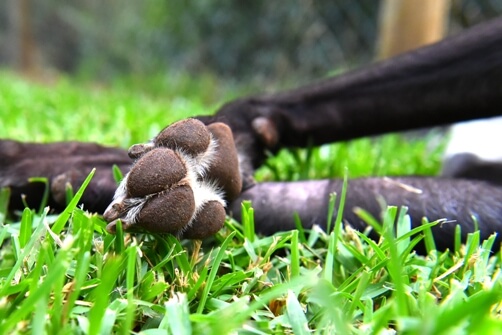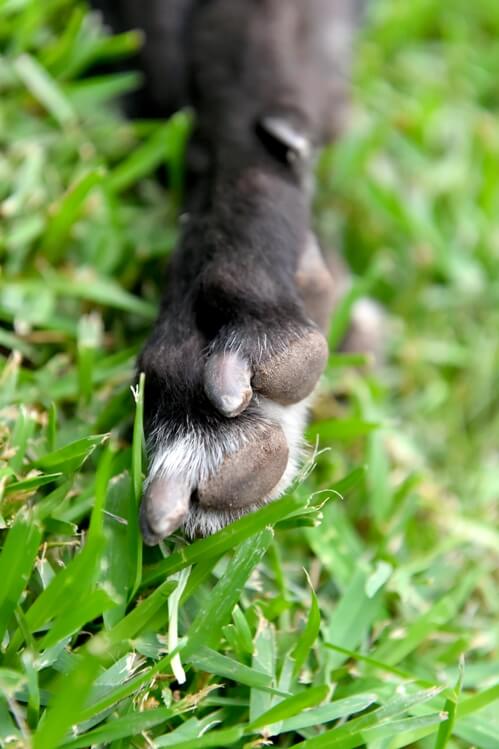Corns are a common cause of lameness in greyhounds – both when racing and when retired. They are an unusual problem in that it is almost unheard-of in other breeds of dog, and many vets who do not treat a lot of greyhounds may not know what they are when they first see them.
Found in the foot pads of the dog, corns are often seen as a circular area or ‘dot’ in the base of the pad. When they first appear, they can be quite small and may look just like a bit of foreign matter that has stuck in the pad. As they get bigger, they start to look quite characteristic – a circle that’s a different colour or texture to the rest of the foot pad. They are normally hard and often quite painful when pressure is applied. Usually the owner or trainer reports the greyhound has been showing signs of lameness that may be worse when the dog is on hard surfaces such as concrete or gravel.
The cause of corns is thought to be either a reaction to damage or trauma (where the body safely ‘walls-off’ an area of damage with scar tissue), or due to a viral infection similar to the papilloma virus in humans. It is thought that the viral cause is the most common reason for the appearance of corns according to the book ‘Care of the Racing and Retired Greyhound’.

How will I know if my greyhound has a corn?
If your greyhound appears to be lame, one of the things that you must check is the foot surface and the pads. Remember, there are many causes of lameness – from muscle injuries, damage to bones and ligaments, as well as a variety of foot problems – so a thorough check of ALL possible areas of discomfort is needed.
If you look at the foot pads and see a circular area that is painful when you apply some pressure, then your greyhound may have a corn. It is important that you have the greyhound examined by a vet at this stage to make sure you get the correct diagnosis, and to discuss treatment.
It is not uncommon to have corns in more than one pad of the foot, or in more than one foot at the same time, so make sure that you check all your dog’s feet.

What can be done about corns?
Treatments suggested for corns vary according to the size and the severity of the corn. Obviously any treatment is easier when the corn is small, rather than waiting until it is of a size where it is a much bigger job to treat.
Treatment might include filing or flattening to take away some of the pain caused by pressure on the corn, but usually the answer is to have the corn removed surgically. There are a lot of other treatments, but you need to discuss them with your vet so that you fully understand the consequences of each choice, and the likelihood of success. At the end of the day, the pain will not resolve unless the corn is no longer pressing on the sensitive tissue of the foot pad – so something will have to be done.
In some severe cases, or when the corn is particularly large or keeps coming back, surgical amputation of the affected toe has been performed. Although this will solve the problem permanently in that toe, it’s always possible that another corn could develop in another toe of the same foot.
For more information about Greyhound Care and Standards, click here.


